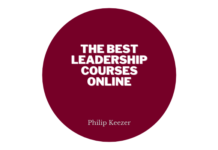In today’s rapidly evolving business landscape, effective product development has become essential for companies to stay competitive and meet customer expectations. In this article, Phil Keezer outlines some of the best practices that businesses should consider when creating new products.
By embracing these practices, companies can enhance their chances of success, minimize risks, and deliver exceptional value to their target audience.
Understanding Customer Needs
The foundation of successful product development lies in a deep understanding of customer needs. Before starting the development process, it’s crucial that we undertake thorough market research and gather customer feedback. This allows businesses to identify pain points, preferences, and emerging trends.
By empathizing with your target audience, your business will be better able to create products that truly address customer needs and provide unique solutions, setting themselves apart from the competition.
Cross-Functional Collaboration
Effective product development requires collaboration between various departments within a business.
Breaking down silos and fostering cross-functional collaboration helps ensure that different perspectives and expertise are leveraged throughout the process. Marketing, design, engineering, and other relevant teams should work together from the early stages, facilitating a holistic approach to product development. This collaborative effort enhances communication, minimizes misunderstandings, and leads to more innovative and well-rounded products.
Agile Methodology
Adopting an agile approach to product development has gained significant traction in recent years. An agile methodology emphasizes flexibility, adaptability, and iterative development. By breaking the development process into smaller, manageable stages, businesses can gather feedback early and make necessary adjustments promptly. Regular testing and continuous improvement enable teams to respond to changing market dynamics and customer demands more effectively, resulting in products that align with market expectations and deliver enhanced value.
User-Centric Design
User-centric design places the user experience at the forefront of product development. By prioritizing usability, aesthetics, and intuitive design, businesses can create products that resonate with their target audience. Conducting user testing and incorporating feedback throughout the design process enables companies to refine their products iteratively.
Moreover, leveraging data analytics and user behaviour insights helps identify pain points, optimize user journeys, and deliver a delightful experience, ultimately fostering customer satisfaction and loyalty.
Continuous Market Evaluation
Market dynamics are constantly evolving, and businesses need to adapt accordingly. It is crucial to continuously evaluate the market landscape, monitor competitors, and gather customer feedback to remain ahead of the curve. By staying attuned to changing trends, emerging technologies, and customer demands, companies can proactively update their products and incorporate new features or improvements. This iterative approach ensures that products remain relevant and competitive in the ever-changing business environment.
Robust Project Management
Effective project management plays a vital role in successful product development. By defining clear objectives, setting realistic timelines, and allocating resources efficiently, businesses can ensure smooth execution of their development projects. Regular communication, transparent documentation, and stakeholder involvement throughout the process help manage expectations and minimize risks. Employing project management methodologies such as Scrum or Kanban can further enhance team collaboration, task prioritization, and project visibility, leading to timely and high-quality product deliveries.
Implementing best practices in product development is crucial if you want your business to thrive in today’s competitive landscape. By understanding customer needs, fostering collaboration, embracing agile methodologies, prioritizing user-centric design, continuously evaluating the market, and implementing robust project management, companies can maximize their chances of developing successful and impactful products.













